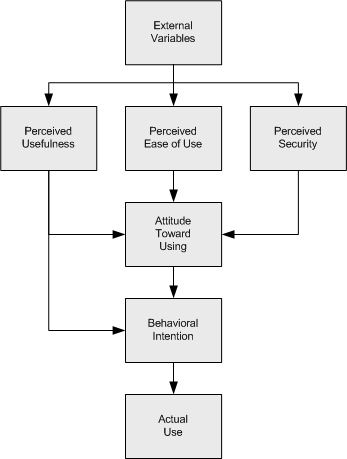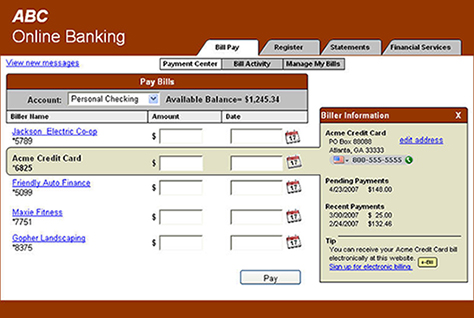An ecommerce site presents another example: A user might go to the site to buy books, but does not buy other types of products the site offers, such as music or electronic gadgets.
In cases where user adoption curves flatten out at suboptimal levels, companies miss out on revenues they might otherwise get from additional fees or sales. Even in non-consumer-facing applications, suboptimal adoption levels can lead to their economic harm. For example, administrators of a network security system might find the application’s reporting capability to be unsatisfactory, because they use its canned reports instead of learning how to customize reports and improve their effectiveness. Their dissatisfaction with reporting could make the security vendor more vulnerable to competitors who boast of their more useful reports.
Many technology companies think of user adoption as an all-or-nothing, take-it-or-leave-it decision. This column poses an alternative view: progressive user adoption. A progressive user adoption strategy consciously exposes new features of a product and moves users to new levels of product adoption over time. In this column, I focus on the role of user assistance in promoting progressive adoption.
Causes of Suboptimal Adoption
When considering how to persuade users to expand their adoption of more advanced product features, it helps to know why users stop learning in the first place. Based on observations of users during usability tests, in training environments, and at work, my conclusion is that users stop learning for the following reasons:
- Users shift from a learning or exploration mode to a task execution mode. In their initial encounters with a new product, users explore and experiment as part of their learning process. Once users learn enough to meet their initial goals, they stop exploring and experimenting. Instead, they focus on doing the tasks that initially motivated them to use the application.
- The benefit versus effort ratio gets smaller. This ratio becomes less attractive as users move from initial adoption to incremental improvement of their skills. For example, when first confronted with a new phone, users are highly motivated to learn how to make and receive calls and consistently reach those goals. However, the effort to change ring tones, enter contacts’ names and numbers in the directory, or learn how to conference in a third party might be more than a user is willing to make.
Understanding these root causes is one thing; knowing how to overcome them is another. For that, we need a better understanding of the dynamics of technology adoption.
Technology Adoption Models
Two well-established models let us understand user adoption of technology products:
- the technology acceptance model
- the innovation diffusion model
Technology Acceptance Model
Figure 1 shows a slightly modified technology acceptance model that is based on the one Davis, Bagozzi, & Warshaw originally proposed. I’ve added a box labeled Perceived Security, reflecting what later researchers have learned about users’ willingness to conduct ecommerce over the Internet. In looking at this technology acceptance model, one thing becomes clear: To persuade a user to adopt an additional feature, you must affect the user’s perception of the feature’s usefulness and ease of use, as well as the user’s sense of security concerning that feature. In the case of progressive user adoption, user assistance can be an effective external variable that accomplishes all of this.

Innovation Diffusion
Everett Rogers identified the following attributes of innovations and their positive (+) or negative (-) influences on adoption:
- relative advantage (+)—The degree to which users perceive an innovation as better than the idea it supersedes.
- compatibility (+)—The degree to which users perceive an innovation as consistent with the existing values, past experiences, and needs of potential adopters.
- complexity (-)—The degree to which users perceive an innovation as relatively difficult to understand and use.
- observability (+)—The degree to which the results of an innovation are visible to others—how easily users can describe them.
- trialability (+)—The degree to which users can experiment with an innovation on a limited basis.
In short, the process for successfully promoting an innovation is as follows:
- Tell how it is better than what a user is doing now.
- Demonstrate that it is easy and consistent with what the user already knows or already does.
- Let the user try it in safe, verifiable increments.
I had an opportunity to see the third point in action, while observing a series of focus groups. The focus groups saw two versions of a user interface. One was very simple, but lacked a robust set of features, and the other offered a robust set of features that market research had indicated users wanted.
The facilitator demonstrated both user interfaces, then asked which one the members of the group preferred. All groups selected the simple one, adamantly claiming the other was too busy. But when asked what they would change about the user interface they’d preferred, they incrementally added functionality that eventually recreated the options they had initially rejected. Then, when shown the rejected user interface again, they enthusiastically endorsed it. Products that look overwhelming and busy, at first, often end up matching the level of functionality users ultimately want. They just need to get to that level in manageable steps—precisely the strategy of progressive user adoption.


